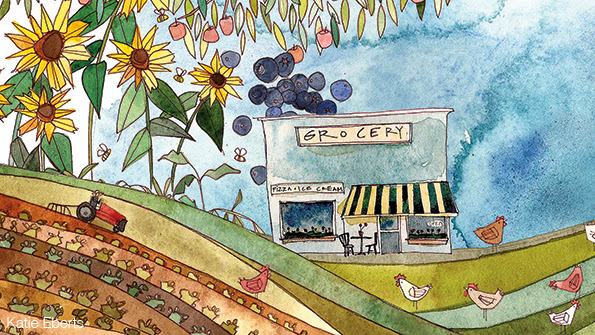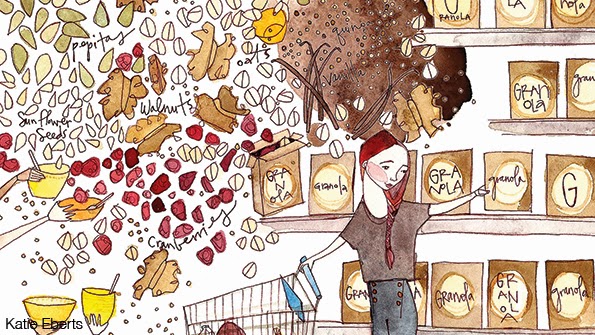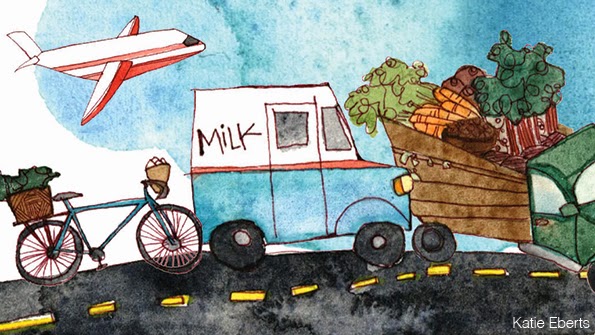Is Big Organic Bad?
How organics’ growth has changed the food landscape—for better and worse.
Every winter I visit my dad in central Idaho, where the snow piles high along the two-lane interstate that slices the state from north to south and guides travelers through serene valleys and canyons dotted with tiny rural towns. In McCall, Idaho, nearby farms and ranches sell organic beef, eggs, fresh herbs, and even wild huckleberries at the weekly farmers’ market during warmer months, and most households keep a deep freezer in the garage stocked with locally harvested elk meat, salmon, and trout.
It seems like an idyllic throwback that hasn’t succumbed to big-box stores and urban sprawl. But even here, long winters notwithstanding, my dad and his neighbors can find nonlocal organic food in the grocery aisles year-round, thanks to organics’ meteoric expansion during the past three decades.
It’s at this intersection of supply and demand where some people question organics’ exponential growth, wondering if the movement has lost its soul along the way. Many longtime organic champions voice concerns about the implications of “Big Organic” and how it affects the true tenets of organic agriculture. Producers, retailers, and shoppers alike fret about increased environmental and economic impacts as organic expands. Are the worries justified? Or must organic scale up to compete in a global marketplace?
What is Big Organic?
You probably support your own small-scale organic favorites: local companies that make great, wholesome products, sell them at regional shops, and maintain a homemade, hometown vibe. But you’ve undoubtedly seen (and likely bought) Big Organic too: large-scale operations, such as Earthbound Farm or Horizon Organic, that supply enormous amounts of certified-organic products to national and international markets (think Costco and Walmart), often at lower prices.
Small towns like McCall are not the only parts of the United States that desperately need access to organics across socioeconomic lines. Even large urban districts with sound infrastructure suffer from restricted access to affordable, organically grown produce and packaged goods. Walmart recently released a statement that it intends to double its organic-produce offerings, but it didn’t mention accountability measures or specific time frames.
As the organic market grows to meet demand, the following challenges—and compromises—will grow, too.
Local Challenges
Although small-scale organic food makers are the movement’s roots, they sometimes struggle to produce enough, often because of forces outside their control (weather, commodity price fluctuation, sourcing difficulty) that can drive up prices.
In contrast, large companies are able to lean on a deep and wide supply network, which mitigates some of the variables all food producers face.
Let’s say, for example, that you make a fantastic granola with certified-organic ingredients in a small commercial kitchen. You might order your oats from a nearby farmer you know personally and your nuts and dried fruit from in-state sources. But then you decide to expand your business, so now you need to make a lot more granola. That probably means connecting with suppliers you don’t know but who can provide larger quantities, perhaps from distant or even international farms.
In addition, now your ingredients travel from all over the world to reach you, and you must ship your finished product in all directions—using vastly more production resources and fossil fuels than before. So more people get your organic granola, but it’s a trade-off.
“Scale has always been a challenge in organic food for the simple reason that conventional farming, organics’ antithesis, uses herbicides, pesticides, and GMOs to maximize crop yield in the shortest time possible. Large-scale organic operations also aim for healthy yields but subscribe to a broader ethical and sustainable farming approach,” says Danny Houghton, vice president of marketing and sales at One Degree Organic Foods in Abbotsford, British Columbia. “Choosing to compete in this way with conventional farmers is not something that should be passed over lightly. It’s a daunting task.”
Economic Challenges
Size also matters when it comes to making organic goods affordable for more consumers. Larger-scale companies can reach a larger pool of customers because of improved production and transportation efficiencies, says Houghton.
Earthbound Farm, suppliers of now-ubiquitous organic boxed lettuce, was among the earliest organic players to go big. “We’re proud to offer an organic alternative to conventionally produced food where people do the majority of their shopping: at the supermarket,” says cofounder Myra Goodman. Because Earthbound Farm is able to achieve economies of scale by large production year-round in a suitable climate, it is able to make organic more affordable and reach a larger audience. Another little-heralded economic benefit: Organic farming is more labor-intensive and provides more long-term work for skilled farm workers, thus contributing to local economies.
But while availability goes up and prices go down, Goodman also acknowledges that something important gets lost.
“Small growers can offer consumers a much more intimate connection with their food. It’s wonderful to be able to meet the people who are growing your food face-to-face, whether at a farmers’ market or while picking up your CSA box, and be able to ask questions and hear their unique stories about what’s going on in their fields or orchards,” she says. Another often-overlooked consideration: In a time when many large-scale organics are owned by conglomerates, such as Unilever and PepsiCo, smaller ones tend to be independently owned and invested in their local communities.
Environmental Challenges
Because of USDA Organic standards, which took effect in 2000, all certified-organic manufacturers must comply with strict regulations and meet regular inspection requirements.
In a sense, these standards were written with organics’ soul in mind, to create a level playing field for anyone seeking to earn the trusted USDA Organic seal.
One primary function of these standards: to protect Earth. Small organic producers are nimble enough to implement new strategies or change harvest practices if necessary when prices or weather patterns fluctuate, but the sheer size of large operations often forces them to rely on gas- and water-sucking farm equipment to meet their supply goals.
Even so, says Goodman, it’s worth it. According to the USDA, there are nearly 5 million acres of organic farmland across the nation, representing less than 1 percent of total U.S. agricultural acreage. “The more people buy organic food, the more land is farmed without dangerous synthetic chemicals. Earthbound Farm alone avoids the use of more than 19 million pounds of synthetic agricultural chemicals every year; that’s a huge impact,” she says.
Organic benefits Earth’s inhabitants, too, and not just the shoppers who eat clean, toxin-free foods. Farm workers in organic fields are exposed to far fewer pesticides and herbicides compared with conventional farms, many of which require no safety measures for laborers.
Vote with Your Dollars
So is small always beautiful? That depends on your priorities. “While all food companies are entitled to make a profit, you should do your homework and choose to reward companies that balance the pursuit of profit with tangible, sustainable business practices,” says Houghton.
Whether you find shelves of organic cereal in a big-box store or a single organic brand in a small Idaho town, Goodman’s personal approach may simplify your decisions. “I think in this conversation about big and small organic, it’s really important not to pit one against the other and realize that all organic farming is a huge step in the direction of creating a healthy and sustainable food supply,” she says. “People need to know that when the health of their family and the environment is a top concern, they need to choose organic first and foremost. The questions of size and location are truly secondary.”


